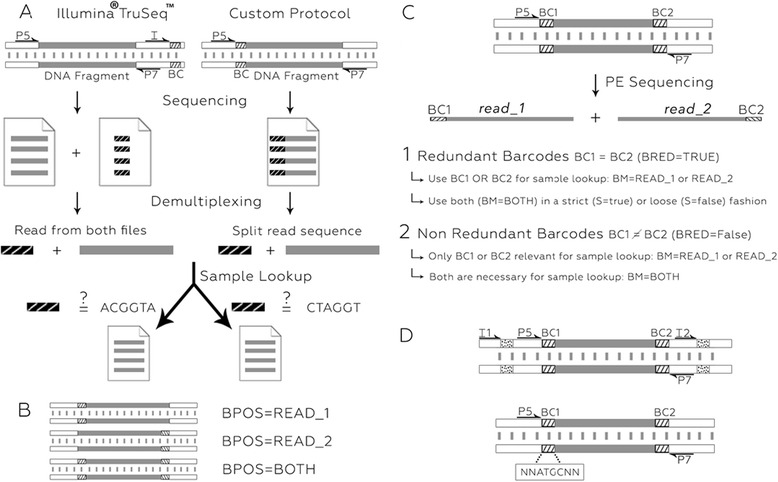Fig. 1.

Barcoding Strategies. a Schematic view of the multiplexed library processing. A unique and different barcode (BC, white box with black stripes) is used for each sample. The barcode is placed further down the DNA fragment and sequenced in a specific sequencing round (Illumina® TruSeq™, left); or directly upstream the DNA fragment and sequenced concomitantly (custom protocol, right). After sequencing and image processing, reads of multiplexed samples are mixed together in the fastq result file. For each read, the barcoding sequence (black box with white stripes) is computationally clipped off the read end (custom protocols) or read from the additional barcode file (Illumina® TruSeq™, index file is provided with the I1 option); and the original sample is identified by comparing this barcoding sequence to known barcodes. Finally, read sequences are saved in sample specific fastq files. b In PE sequencing, barcodes can be added to one or both fragment ends. The Je demultiplex BPOS option indicates which read(s) contain(s) the barcode(s). c demultiplex options for barcodes present at both read ends. A decision is needed to specify which barcode is used to identify separate samples. d Combining UMIs (BC1 and BC2, white box with black stripes) with Illumina sample indexing (white box with black dots, top) or as composite barcode (bottom). In a composite barcode, the number of random base upstream and downstream the sample index is variable
